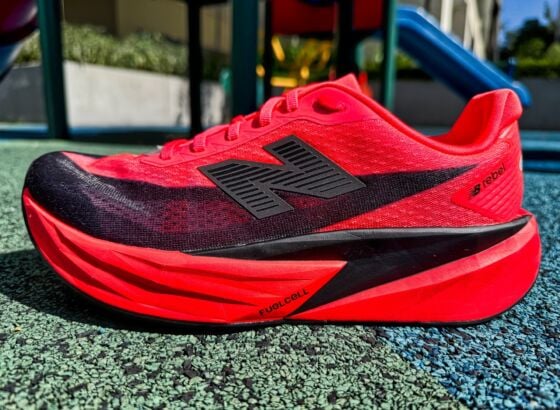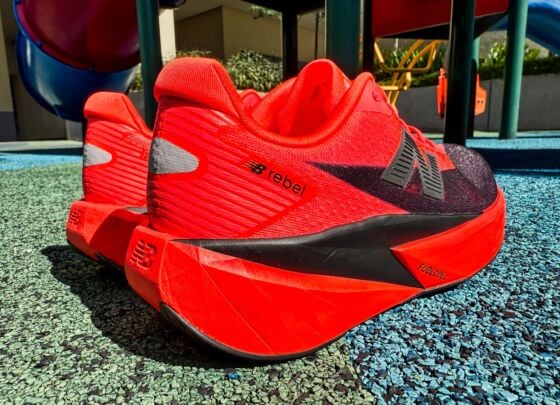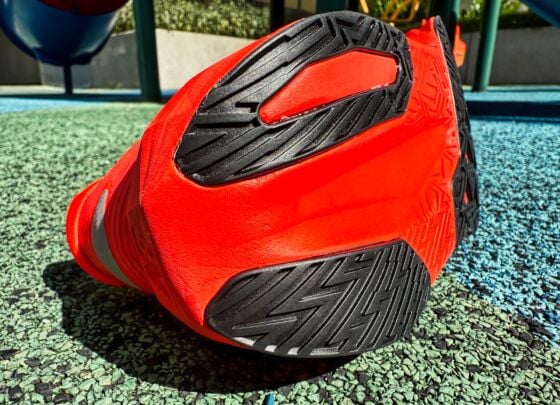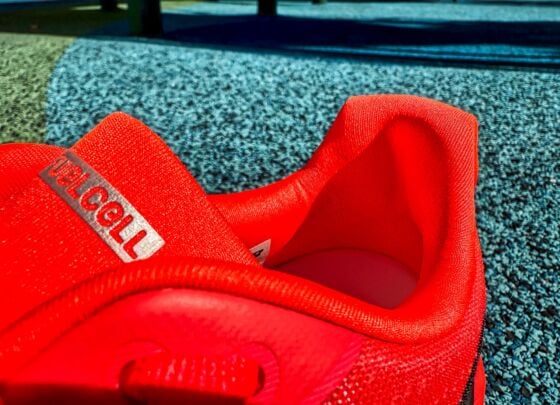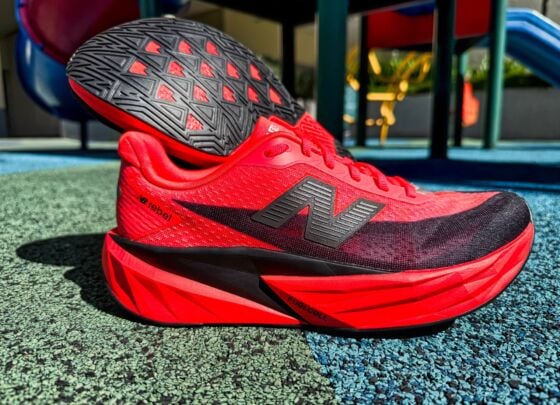New Balance FuelCell Rebel v5 review
New Balance FuelCell Rebel v5 Verdict
The pros
- Great energy return from PEBA/EVA midsole
- Much better, more dialed-in upper
- More cushioning depth
- Lightweight build
The cons
- Soft midsole scrapes and punctures easily
- Feels slower than v4
- Less stable than v4
Rating breakdown
Facts / Specs
Size/Fit
Cushioning & ride
Usage
Who should buy the New Balance FuelCell Rebel v5 ?
If you liked the Rebel v4 but you found it not cushioned enough, v5 with its thicker midsole will be a great option.
If you want a lightweight, energetic ride with no stiffener in its midsole, the Rebel v5 is a great choice.
Who should not buy the New Balance FuelCell Rebel v5 ?
If you like firm, fast rides with a lot of ground feel, the Rebel v5 will be too soft for you.
If you like a snappy forefoot, the Rebel v5 will be too flexible with the absence of a plate.
New Balance FuelCell Rebel v5 Introduction


In 1906, William Riley noticed how chickens have perfect balance with their 3-pronged feet. He then designed a flexible arch support with a 3-point system and he named the company “New Balance”.
Throughout the years, most of New Balance’s offerings have been relatively stable. From neutral trainers like the 1080, all the way to their speed range (the SC Elite & SC Trainer), they all have very supportive, stable rides.
The Rebel v1 was one of the wild shoes which was an exception. It had an unusual lateral wing which encouraged an inward ankle rolling motion. If you were an overpronator, this shoe was unsuitable for you.
Over the years, the Rebel design became less and less radical with each new iteration, and the lateral wing became less prominent. Now, with v5, it has been completely removed. This is a good thing because it makes it suitable for a wider range of runners.
Last year, when I reviewed the Rebel v4, I said that it was the best version to date. It felt more like a lightweight, speed trainer than its predecessor and its new midsole was a big upgrade. The only thing I didn’t like was its upper that felt too baggy.
The Rebel v5 weighs 221 g (7.8 oz). This is 17 grams (0.6 oz) heavier than v4 which is about 1 slice of bread. It has taller stack heights of 35 mm/29 mm, which is 5 mm more than v4 in both the heel and forefoot. The price remains $140.
New Balance FuelCell Rebel v5 First Impressions


My first run was an 8 km easy run. The first thing that I noticed was how much better the upper fit me. It didn’t feel as baggy as v4 and foot lockdown was improved. The mesh felt similar but the new, padded tongue made it feel more comfortable.
The ride felt softer and bouncier while the cushioning felt slightly deeper. It was a bit less stable than v4 due to the softer ride. It also didn’t feel as fast as its predecessor.
The shoe it reminded me of was the Saucony Endorphin Speed 5 but with more energy return and a more agile ride. It was also softer than the Endorphin Speed 5 and had a much more engaging ride.
New Balance FuelCell Rebel v5 Upper

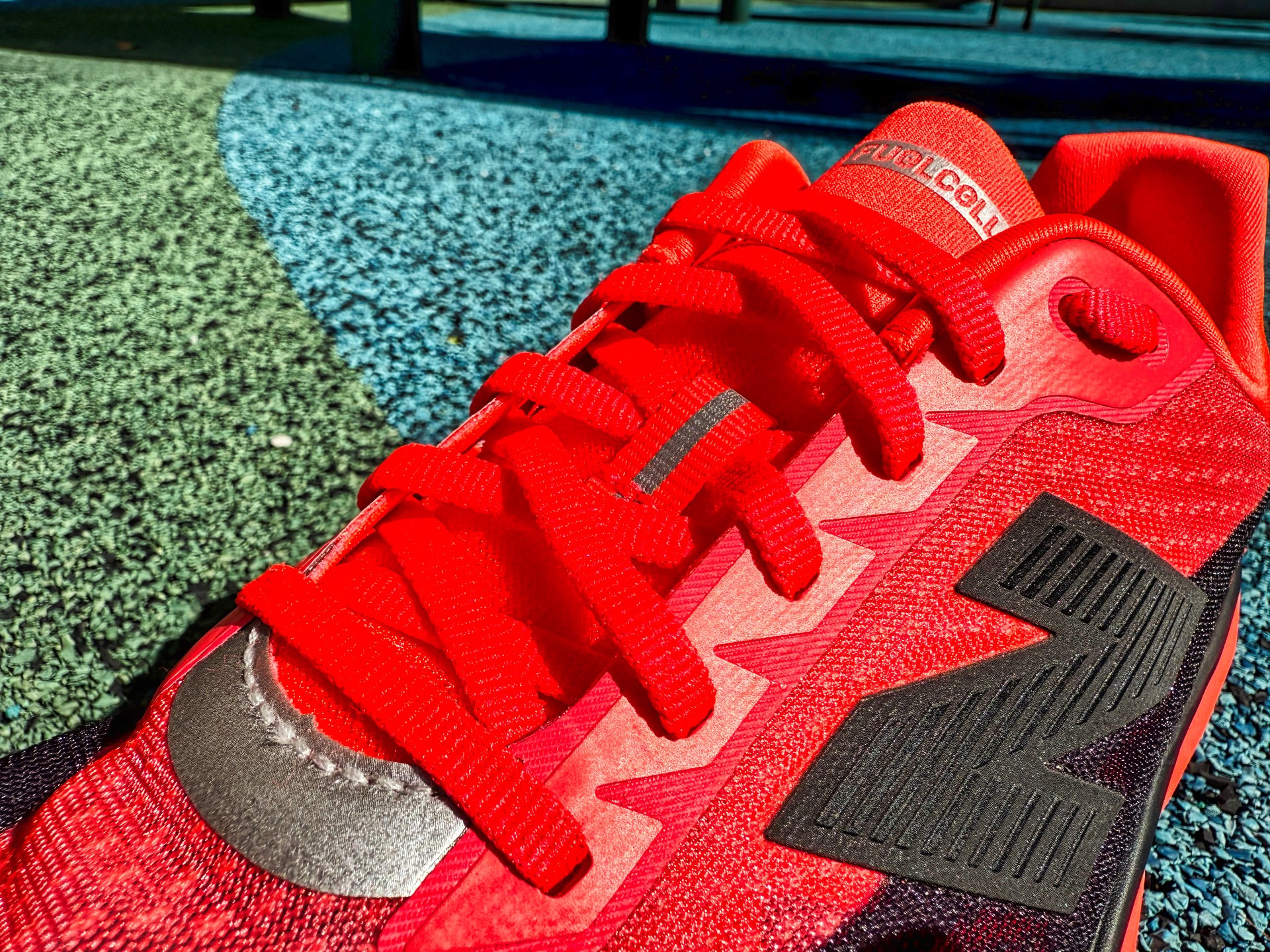
The upper is the biggest area of improvement. It isn’t overly spacious like v4 and foot lockdown is better. This creates a stronger connection between your feet and the sole.
The new tongue is gusseted and it has a thin layer of padding which makes it feel more comfortable. The heel tab is also more padded than previous versions. These changes make it feel more like a daily trainer than a speed trainer.


There are more reflective elements than v4. The writing on the tongue, the entire NB logos on the sides, the top of the toe box and the back of the heels are all reflective, making it a safer trainer when training in low light conditions.
When it comes to sizing, I recommend buying your normal running shoe size. It still has a relatively spacious midfoot, forefoot and toe box so I can recommend it for wide-footed runners.
New Balance FuelCell Rebel v5 Sole Unit
In recent years, the Rebel has flip-flopped between feeling like a daily trainer and feeling like a speed trainer. Version 3 felt soft and cushioned like a daily trainer, version 4 felt light and fast, and now version 5 feels like a daily trainer again.
The main difference in the midsole of this new version is that it’s softer than v4. Not only does it have more 5 mm stack height but the foam also feels like it’s a lower density. It’s roughly 10%-15% softer than the ride of the Rebel v4.
The Rebel v5’s softer ride makes it feel more like a daily trainer than a lightweight speed trainer. While v4 felt nimble, agile and placed your feet lower to the ground, v5 has more relaxed transitions which is more suited to slower running- its midsole compresses more.
As a midsole foam for training, the FuelCell in the Rebel v5 is right up there with the most engaging midsole training foams on the market. It’s lightweight, it returns a lot of energy and it’s very soft so it protects you from ground impact.
It’s a blend of PEBA and EVA and while it doesn’t compress or spring back as quickly as a full PEBA midsole (SC Elite v4), I like it more than the firmer, beaded PEBA midsoles that brands like Saucony and TOPO use. The Rebel is definitely for runners who enjoy a soft and squishy ride.


The longest run I did in the Rebel v5 was 34 kilometres at an easy pace. The extra stack height made it more enjoyable than its predecessors but I wished it had a more prominent rocker (and stiffer forefoot) to help me save energy. I think 34 km is the furthest I could run in it. It requires strong joints and muscles to run long distances in it due to its relatively unstructured midsole.
I enjoy using the Rebel v5 for easy or steady-paced running. It’s also fun to use for fartlek runs that involve short bursts. For tempo, threshold runs and intervals, I find it too flexible and not snappy enough.
There’s still no plate or shank inside the midsole of the Rebel v5 and this makes it harder to pick up the pace than other lightweight trainers such as the Adidas EVO SL. New Balance should implement a mini plate into the Rebel to make it more versatile. It will also add structure and make it more stable.
Stability is worse in the Rebel v5 than v4. The base is narrower than v4 and your feet sit higher off the ground. The softer ride also results in more lean bias if you overpronate or supinate.
The Rebel v5’s main weakness is its outsole durability. The FuelCell foam is very soft so it gets scraped up easily in the high wear areas. I’ve done 120 km in my pair and the outer lateral heel area is showing some significant wear, even more wear than on the v4.
The outer lateral heel strip of rubber is shorter than v4 so it doesn’t offer as much protection for heel strikers. This is not a daily workhorse that you can use for junk, every day miles. Traction is acceptable in wet conditions; good in dry conditions.
New Balance FuelCell Rebel v5 Conclusions


This version of the Rebel strays further from what the original Rebel was designed to be: a fast, lightweight, speed trainer. However, most runners I know prefer to use a plated trainer/racer for speed training so the Rebel is now a daily trainer for most runners.
If you use the Rebel for uptempo training or racing, you’ll prefer the firmer, faster v4 but if you use it for easy or relaxed runs, you’ll prefer the softer, more cushioned v5. I personally prefer v5 because I have narrow, low volume feet and the upper feels more comfortable.
The Rebel v5 is still an exciting, lightweight trainer with an engaging ride. It disappears on your feet and it has velvety smooth transitions. It does however have very low outsole durability and doesn’t provide much support.
I think $140 is the right price for the Rebel. It may seem like great value because it has PEBA in its midsole but it has very low outsole durability and if you’re hard on outsoles like me, you probably won’t be able to get more than 300 kilometres out of it. I also find that sharp stones and twigs easily pierce the soft foam.
Compared to the competition, the Adidas EVO SL is the biggest threat. It costs $10 more than the Rebel but it feels faster due to its firmer ride and its midfoot shank. Most runners who have tried both, myself included prefer the EVO SL. The Rebel v5 has a more comfortable upper and feels more stable.
How does the FuelCell Rebel v5 compare?
Why you can trust us
As editorial policy, we do not accept free samples from companies.We purchased this pair of New Balance at Running Warehouse with our own money.
This page contains affiliate links. As an Amazon Associate we earn from qualifying purchases. Read more about our policy.
Reviewed by Brandon
Brandon is a South African marathoner based in Malaysia, where the humidity is high and his shoe rotation is even higher. He’s a runner with a full-blown addiction to running shoes. Most people buy shoes to run—Brandon runs to justify buying more shoes. If there’s a new drop, he’s probably already logged 100km in them.
User feedback (0)
Similar shoes to New Balance FuelCell Rebel v5


New Balance Fresh Foam X 880 v15 Review











